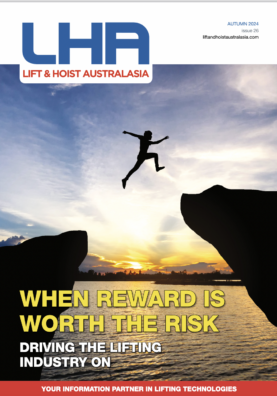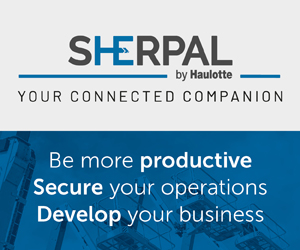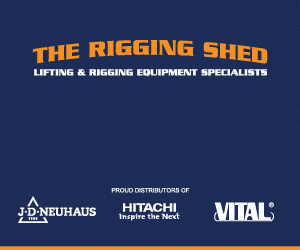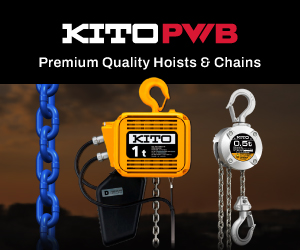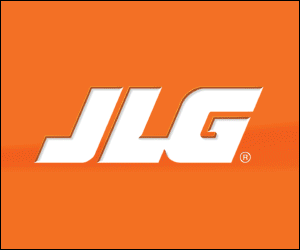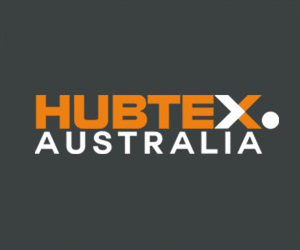Still Rising Up – Ashley Thacker
Source products and services only from specialist providers, especially when safety-critical equipment, such as lifting gear, is involved.
Six years ago, I was interviewed by this magazine’s sister title. I was still in my twenties and had recently been named the Lifting Equipment Engineers Association’s (LEEA) youngest ever board member. I was modest about the achievement but I think it inspired the editor’s choice of headline for the article, “Rising Up”. It chimed nicely with the industry and the subject matter as well.
However, I never saw it like that. Rising Up, to me, was more about the industry collectively achieving fundamental change. I imagined a new generation of lifting industry professionals who would campaign for certain principles, such as the importance of working with specialists and technical experts on all matters related to lifting equipment and height safety; and wholesale acceptance of a third party to deliver the same competency-based training content all over the world, tailored to each geography’s standards. Actually, I saw these two facets as the pillars of progress.
Since Ranger became Australia’s first full member nearly a decade ago, it’s been my belief that LEEA will be a key component in making that happen. As I remember putting it in the aforementioned interview, the association’s ethos incorporates both a company’s ability to dot its i’s and cross its t’s, while assessing that people doing the job in hand understand what they are doing and have the correct skills and knowledge required to do it safely. I’ve always been an advocate for an individual’s competency in addition to broader systems and processes.
I’m pleased to say that over recent years, the association has grown its presence in the Australasian market, and we recently welcomed Justin Boehm as the LEEA representative in Australia and New Zealand. I’m looking forward to providing support in membership growth and other endeavours, but it’s important to be mindful that Justin isn’t a magician and we can’t expect the industry to adapt overnight. It’s about Rising Up together.
That’s why I accepted an invitation from LHA’s publishers to begin this series of columns. Writing is very much a secondary skill, but it’s important to give back to an industry in a variety of ways if one is genuine about helping it to improve. Too many protect their opinions, knowledge, and expertise—and we suffer as a result.
The specialist
I want to use this first article primarily to reiterate the importance of using specialist equipment and service providers and, secondly, to explore training and competency. They’ll be hot topics as this column continues, I’m sure.
Picture yourself ahead of a shift atop the Sydney Harbour Bridge. The wire rope, shackles, and other components that keep safe tourists that ascend the iconic landmark on the famous BridgeClimb need inspecting. Like the sightseers who clamp themselves on, you’re going to want to be sure the height safety equipment has been supplied, inspected, and installed only by specialists in their field. Nothing else will do. It’d be the same for a courier driving a car all day; this vehicle better be safe so the driver goes home to their family that night.
It’s maddening therefore that those who source lifting, rigging, height safety, and other equipment for jobsites from suppliers who lack specialist knowledge don’t adopt the same mindset. I could show you photos of rigging gear, for example, which would frighten the life out of you. I’ve heard about accidents that would shock you. And I could tell you stories that’d make you tell your children never to go to work on a building site.
My company, like many others, is frequently called onto sites to help identify ways of utilising lifting and rigging equipment more safely. Unfortunately, cost, time or the size of the solutions we propose are often given as reasons as to why a decision was made to disregard our expertise. Smaller, cheaper products are used and, guess what, accidents happen. In extreme cases, someone doesn’t go home—ever again.
The problem sometimes runs deeper than in sourcing from suppliers.
I’ve heard of lifting equipment companies going underground without a single minute of safety induction, without the plant needed to make the repair being inspected, just so they could “fix” some wire to prevent the site losing a day of production. In one instance, the individual was given an escort that was supposed to make the scenario safe. The person who made that decision knew something had greater potential to go wrong than if full protocol was observed, but when presented with the options, lost production was all of a sudden more important.
Let’s be clear: on one hand, the Australian lifting equipment marketplace is extremely safe. No tender is won without an A-Class safety rating and top-notch policies in place. Risk assessments are conducted for seemingly everything and no shift gets underway without a safety meeting covering the potential hazards of the site or the activities of personnel and machinery that will take place there. Safety teams and committees ensure every one of their locations is as safe as possible, demanding diligence from the first to last minute of a shift.
However we still can’t truly declare that safety is part of our DNA, as too often the whole culture gets tossed out of the window when time and other pressures are placed upon a job. Can you believe that I was on a mining site (a super-safe industry) recently and heard it said, “Can’t do it right, do it at night”? How can that still happen? It’s almost as if the corporate world has gone galloping off into the distance with safety, but it’s gone too far, too fast. There’s sometimes no balance and no perspective as to what safety actually is.
Competency is king
Commit to training and achieve competency—at all levels. We should strive for it within our own organisations, demand it from our suppliers, and expect it of those who use equipment. I stress that training doesn’t equate to competency though. A competent professional is, accordingly to Standards Australia, a person who has acquired through training, education, and experience, or a combination of these, the knowledge and skills enabling that person to safely and effectively perform the task required. It’s important to look at it as multidimensional.
I’ll share a recent journey we took with regards to crane ropes. Before we marketed ourselves as a supplier, we gathered as much knowledge as possible. Consider that wire rope is a consumable item, meaning it wears and expires long before the apparatus upon which it is fitted. The rate at which that happens is entirely dependent on the application and its duty cycle. I’ll explain:
A rope might only last a few months in a heavy-duty mining environment versus many decades on a turbine hall crane in a power station that’s only used once a year. Think of a long rope on a multilayer drum and the forces imparted on the layers at the bottom under load. Other ropes must resist torque so the load doesn’t spin. Always consider the environment; a galvanised rope on a quayside will be subject to salt corrosion and may therefore benefit from being plastic impregnated.
This is knowledge anyone working with such ropes needs even to think about claiming competency. If training and expertise doesn’t seem readily available, look harder. We recently hosted steel wire rope specialist Barrie Mordue, director at Tensology, who we flew in from the UK to deliver training content largely aligned with ISO 4309:2017(en) Cranes — Wire ropes — Care and maintenance, inspection and discard. Don’t be afraid to think outside the box.
It’s beyond contestation that proper training is important en route to an individual’s competency and industry-wide improvement of best practices.
This is as much your column as it is mine. I have a notebook full of ideas about subjects to explore, from roundslings to relocation, but I’m happy to look into matters from industry. Perhaps you are an end user that’s new to sourcing rigging gear and are getting conflicting messages from suppliers. Or do you have questions on inspection policy or discard criteria? Should you be working with a local provider, a conglomerate, or someone else? Maybe something altogether different is troubling you about the world of lifting and rigging equipment.
Email me and we can open dialogue: ashley@ranger.com.au
I welcome LHA to the marketplace and hope that these pages report on genuine evolution in the years to come.
Thank you for reading.
About the Author
Ashley Thacker is general manager at Ranger Lifting, an independent, family-owned and operated business, specialised in the supply, inspection, and re-certification of lifting, rigging, and height safety equipment. Ashley is a lifting equipment expert with great passion for the industry, where he has worked for 17 years, and a determination to positively impact the way the world uses new technologies and components to lift materials and people.
He was the youngest ever board member of the Lifting Equipment Engineers Association (LEEA) and serves on Australian Standards (AS) Committee ME-025 Lifting Tackle. Ranger became Australia’s first full member of LEEA in 2011. Ashley has an Executive Masters in Business Administration from the University of Wollongong and has completed extensive industry training courses, including LEEA Lifting Equipment General Advanced Programme, Lifting Machines Manual Advanced Programme, and Lifting Machines Power Advanced Programme.
He is also an Advanced Rigger, Licensed Dogman (slinger), and has completed various working at height and height safety courses. Ashley has also taken courses conducted by the industry’s leading manufacturers including Crosby, Bridon, and Tensology. He is contactable at ashley@ranger.com.au.



